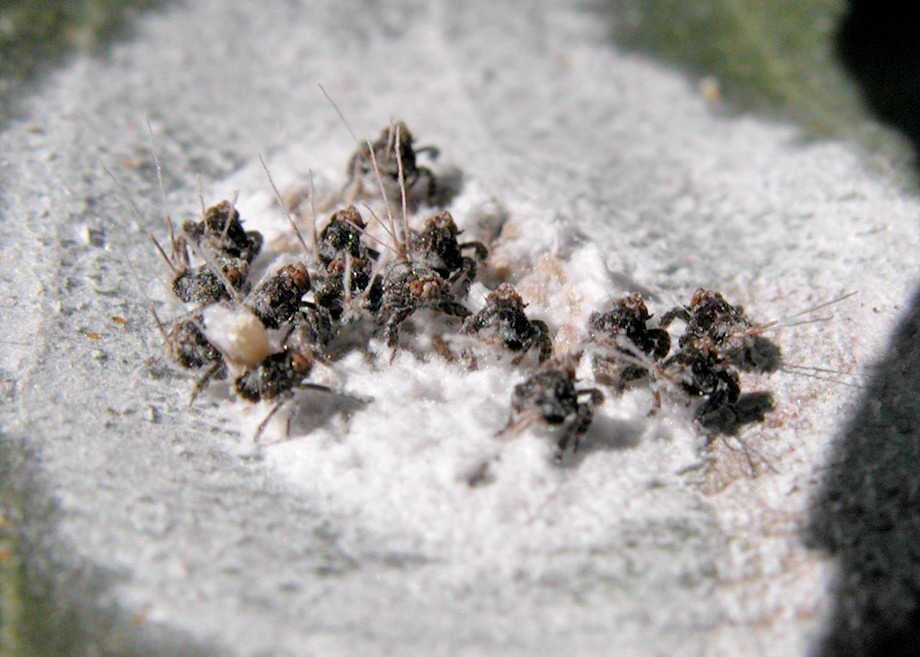- This page contains pictures and information about Small Board-frons Planthoppers that we found in the Brisbane area,
Queensland, Australia.
-
 - Newly hatched instars
-
- The Australian Eurybrachyidae are quite
distinctive from the world fauna. All Australian species belong to the
subfamily Platybrachyinae, most are in tribe Platybrachyini and a few in
this tribe Dardini.
-
- Members in this tribe are small in size. They have mottled
brown forewings and coloured abdomen, usually brown, red, yellow or orange in colour.
All of them have broad frons (front part of head).
-
- They can be found resting on large stems of host plants Acacia. They are not noticeable because of their camouflaged
colours. When we come close to them, they will walk to other spots, either up,
down or sideway, and stop moving. If we come even closer and try to touch them, they will jump with a 'tick' sound and fly away.
- Dardus Wattle Hopper


 - Dardus abbreviatus, body length 6mm
- This Leafhopper is dark brown in colour. Their antenna base is
thicken and look like small horn under each eye. Some black ants were
constantly visit them for their extracted honey-dew. The nymph also has this
two little horns under eyes and with two long tails. They are found on young Black
Wattle during late winter in Alexandra Hill.
Nymphs and adults can be found on the same plants. More pictures and
information please click on here.
-
-
- Spider-face Wattle Hopper


 - Gelastopsis insignis, body length adult 9mm, nymph 6mm
- This planthopper is a bit smaller than the Platybrachys
sp.. They are brown in colour with red abdomen. The brown
colours vary from pale brown to dark brown amount individual. The patterns on wings are about the same.
There is the eyes-pattern on the front part of their head (frons) mimicking
Jumping Spider. More information and pictures please
visit this page.
- Reference:
- 1. Insects
of Australia, CSIRO, Division of Entomology, Melbourne University
Press, 2nd Edition 1991, pp 479.
- 2. Family Eurybrachyidae
- Fletcher, M.J. and Larivière, M.-C. (2001 and updates).
- 3. Genus
Platybrachys Stål sensu lato - By Murray J. Fletcher, 08 April 2007.
- 4. Species
of Eurybrachidae known to occur in Australia - By Murray J. Fletcher,
2009.
- 5. Checklist for Platybrachyini Schmidt, 1908 - Australian Faunal Directory, Australian Biological Resources Study, 2008.
- 6. Northern
Territory Insects, A Comprehensive Guide CD - Graham Brown, 2009.
- Back to Top
[ Up ] [ Eurybrachyid Planthopper Biology ] [ Platybrachini ] [ Dardini ] [ Unknown Eurybrachyid ]
|